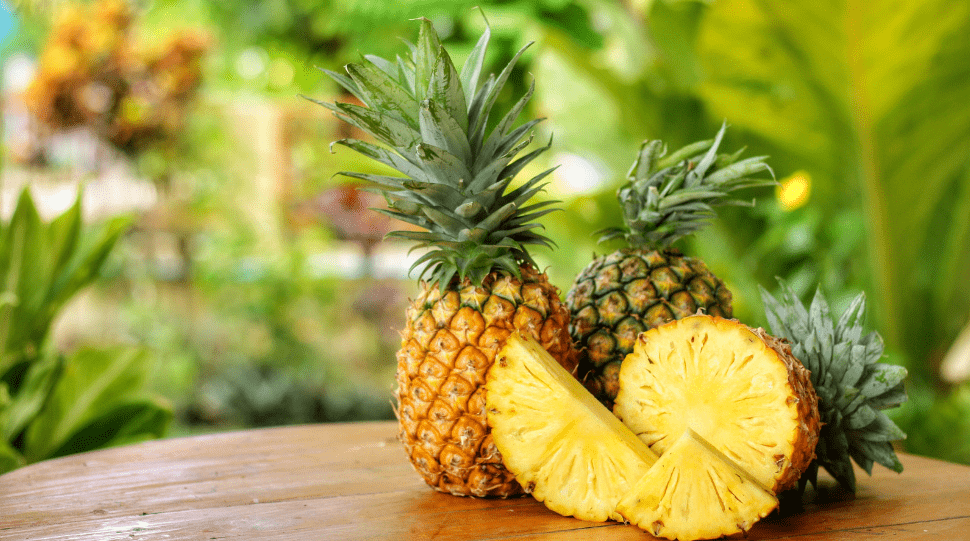
Season of Pineapple: Everything You Need to Know
Pineapples are a beloved tropical fruit enjoyed by people all over the world. Understanding the season of pineapple is crucial for anyone looking to enjoy this delicious fruit at its peak ripeness and flavor. In this comprehensive guide, we will explore everything you need to know about pineapple seasons, from global harvest times to tips on selecting the best fruit and even how to grow your own pineapples.
Table of Contents
ToggleUnderstanding Pineapple Seasons
A. What Determines Pineapple Season?
The pineapple season is primarily determined by the climate and growing conditions of the regions where they are cultivated. Pineapples thrive in warm, tropical climates with well-drained soil and ample sunlight. As a result, the pineapple season varies depending on the geographic location of the pineapple farms. In general, pineapples are available year-round, but peak seasons may vary by country or region.
1. How seasons affect pineapple growth and ripeness
The seasons have a significant impact on pineapple growth and ripeness. During the warmer months, pineapples experience optimal growing conditions, leading to better fruit development and ripening. In contrast, colder or rainy seasons may slow down growth and affect the quality of the fruit. Understanding these seasonal variations can help consumers select the best pineapples and ensure they are ripe and flavorful.
B. Global Pineapple Seasons
The pineapple season varies depending on the geographic location of the pineapple farms. In general, pineapples are available year-round, but peak seasons may vary by country or region. For example, in the Caribbean and Central America, peak pineapple seasons typically occur from March to July. In Hawaii, the peak season is from June to August. In Southeast Asia, the peak season is from November to February. Understanding these regional variations can help consumers know when to expect the best quality and availability of pineapples from different parts of the world.
Identifying Pineapple Season in Key Regions
A. Hawaii
Hawaii is known for its delicious and sweet pineapples. The peak season for pineapples in Hawaii is from June to August. During this time, the pineapples are at their juiciest and most flavorful. When selecting pineapples from Hawaii, look for ones that are golden yellow in color and give off a sweet, fruity aroma. These are signs that the pineapple is ripe and ready to eat.
B. Costa Rica
Costa Rica’s pineapple season typically runs from November to April. The climate and soil conditions in Costa Rica are ideal for growing pineapples, resulting in a high-quality and flavorful fruit. When looking for pineapples from Costa Rica, choose ones that are a vibrant golden color, have a firm texture, and give off a sweet scent. This indicates that the pineapple is ripe and ready to enjoy.
C. Philippines
In the Philippines, the pineapple season generally runs from March to June. When selecting a ripe pineapple from the Philippines, look for one that has a golden yellow color, is slightly soft to the touch, and gives off a sweet aroma. These are all signs that the pineapple is at its peak ripeness and ready to be enjoyed.
D. Other Major Producers
When looking for pineapples from other major producers, it’s important to consider the same factors of color, texture, and scent. Look for a vibrant golden color, a firm texture, and a sweet scent to ensure that the pineapple is ripe and ready to enjoy, regardless of the country of origin. Keep in mind that different regions may have slightly different growing seasons, so it’s always best to check the specific harvest times for each country.
1. Thailand, India, Brazil, and other regions
Thailand, India, and Brazil are also major pineapple producers, with each region having its own unique growing seasons. When selecting pineapples from these countries, it’s important to look for similar signs of ripeness such as a vibrant golden color, firm texture, and sweet scent. It’s always best to check the specific harvest times for each country to ensure you are getting the best quality pineapple. Regardless of the country of origin, a ripe and ready to enjoy pineapple will exhibit these characteristics.
Buying and Enjoying Pineapples in Season
A. How to Select the Best Pineapples
When selecting pineapples, look for a vibrant golden color, a firm texture, and a sweet scent. These are signs that the pineapple is ripe and ready to enjoy, regardless of the country of origin. Keep in mind that different regions may have slightly different growing seasons, so it’s always best to check the specific harvest times for each country.
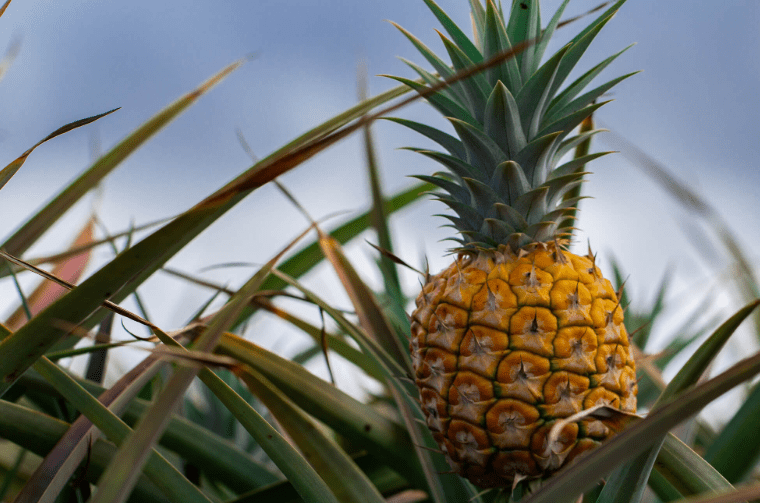
B. Benefits of Eating Pineapples in Season
Eating pineapples in season ensures that you are getting the freshest and most flavorful fruit available. In season pineapples are also likely to be more affordable and have a higher nutritional content. Plus, by purchasing in-season produce, you are supporting local farmers and reducing the environmental impact of transporting fruit long distances. Overall, eating pineapples in season is a great way to enjoy the best quality fruit while also benefiting the environment and local communities.
C. Recipes and Uses
There are countless delicious ways to enjoy pineapples in season. Some popular recipes and uses include adding fresh pineapple to fruit salads, grilling pineapple for a tasty side dish, blending it into smoothies or juices, or using it in savory dishes like stir-fries or salsas. You can also use pineapple to make homemade jams, preserves, and desserts like pineapple upside-down cake or pineapple sorbet. With its sweet and tangy flavor, pineapple is a versatile fruit that can be used in a wide variety of dishes to add a tropical twist.
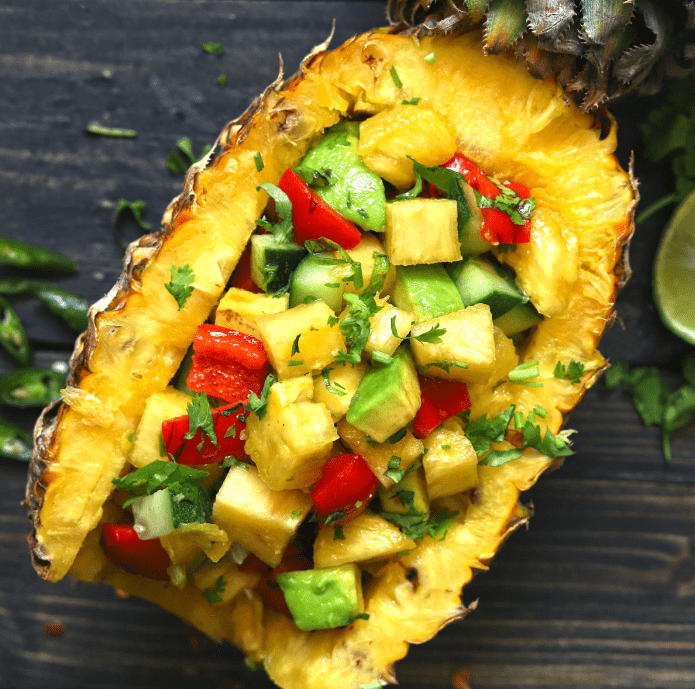
Growing Your Own Pineapples
A. Ideal Growing Conditions
If you’re interested in growing your own pineapples, it’s important to understand the ideal growing conditions. Pineapples thrive in warm, tropical climates with plenty of sunlight and well-draining soil. They can also be grown in containers indoors if you live in a cooler climate. Pineapples require regular watering and can benefit from occasional fertilization. It’s important to note that it can take up to two years for a pineapple plant to produce fruit, but the reward of growing your own delicious pineapples can be well worth the wait. Overall, with the right care and attention, growing pineapples can be a rewarding and enjoyable experience.
B. Planting and Care
When planting a pineapple, it’s important to choose a spot with full sun and well-draining soil. If you’re growing them in containers, make sure the container has drainage holes and use a well-draining potting mix. Water the plant regularly, but be careful not to overwater as pineapples are susceptible to root rot. Fertilize the plant every few months with a balanced fertilizer to promote healthy growth. Prune any dead or damaged leaves to keep the plant looking its best. With the right care and attention, you can enjoy fresh, homegrown pineapples in no time.
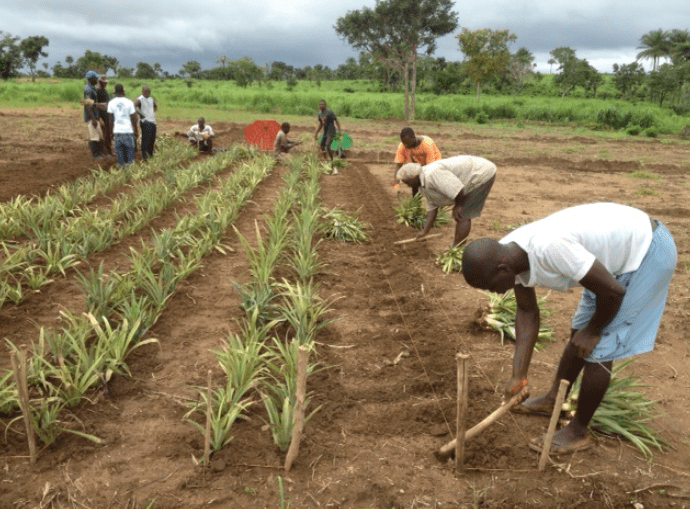
C. Harvesting and Timing
When it comes to harvesting pineapples, it’s important to wait until they are fully ripe before picking them. A ripe pineapple will have a golden color and a sweet smell at the base. You can also gently tug on the leaves – if they come out easily, the pineapple is ripe. It usually takes about 18-24 months for a pineapple to reach maturity and be ready for harvest. It’s best to harvest pineapples in the morning when the temperatures are cooler to ensure the fruit stays fresh. Enjoy the fruits of your labor and savor the delicious taste of homegrown pineapples.
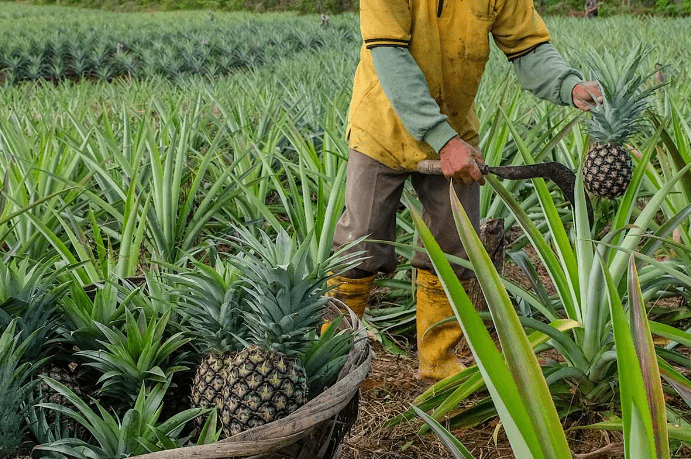
Pineapple Varieties and Their Seasons
A. Common Pineapple Varieties
The most common pineapple variety is the Smooth Cayenne, which is known for its sweet and juicy flavor. Other popular varieties include Queen Victoria, Red Spanish, and Abacaxi. These varieties may have slightly different flavors and textures, but all make for delicious, tropical fruit. Pineapples are typically in season year-round, but peak season for most varieties is from March to July. It’s always best to check your local market for the freshest and most in-season pineapple varieties.
B. Specialty and Regional Varieties
Specialty and regional varieties of pineapples are diverse and unique, offering different flavors, textures, and appearances. Some popular specialty and regional varieties include the Sugar Loaf, White Jade, and Golden Supreme. These varieties may be less common but are valued for their exceptional taste and quality. Specialty and regional pineapple varieties may have specific seasons based on their growing regions, so it’s important to check with local markets or farmers to find out when they are in peak season. It’s an exciting opportunity to try different varieties and explore the wide range of flavors that pineapples have to offer.
Preserving Pineapples
A. Methods of Preservation
There are several methods for preserving pineapples to enjoy their delicious flavor year-round. Canning, freezing, and drying are popular preservation methods for pineapples. Canning involves cooking the pineapple in a sugar syrup and then sealing it in sterilized jars. Freezing pineapples can help retain their freshness and flavor, while drying them can create a chewy, sweet snack. It’s important to follow proper food safety guidelines and storage recommendations to ensure the pineapples are preserved safely. By preserving pineapples, you can enjoy their sweet taste and nutritional benefits even when they are out of season.
B. Off-Season Availability
Pineapples are available year-round, but if you want to enjoy them out of season, there are methods of preservation that can help. Canning, freezing, and drying are popular ways to preserve pineapples so that you can enjoy their delicious flavor anytime. Each method has its own benefits, and it’s important to follow proper food safety guidelines and storage recommendations to ensure the pineapples are preserved safely. By preserving pineapples, you can have access to their sweet taste and nutritional benefits even when they are not in season.
Health Benefits of Pineapples
A. Nutritional Profile
Pineapples are a great source of vitamin C and manganese, as well as fiber and antioxidants. They also contain bromelain, an enzyme that may have anti-inflammatory and digestive benefits. Enjoying preserved pineapples allows you to still get these nutritional benefits even when they are out of season. So, whether you choose to can, freeze, or dry them, you can still enjoy their sweet taste and health benefits year-round.
B. Seasonal vs. Off-Season Nutrition
Pineapples are most abundant and fresh during the peak growing season, usually in the spring and summer months. However, even when out of season, preserved pineapples can still provide essential nutrients and health benefits. Canning, freezing, or drying pineapples allows you to enjoy their nutritional benefits year-round, making it a convenient and versatile option for maintaining a healthy diet. So, whether it’s peak season or off-season, you can still incorporate pineapples into your regular diet and reap their health benefits.
Common Myths and Misconceptions
A. Myth: Pineapples Have a Single Season
This is a common myth. Pineapples are most abundant and fresh during the peak growing season, usually in the spring and summer months. However, even when out of season, preserved pineapples can still provide essential nutrients and health benefits. Canning, freezing, or drying pineapples allows you to enjoy their nutritional benefits year-round, making it a convenient and versatile option for maintaining a healthy diet. So, whether it’s peak season or off-season, you can still incorporate pineapples into your regular diet and reap their health benefits. It’s important to know that you don’t have to limit your consumption of pineapples to just one season, as you can enjoy them throughout the year.
B. Myth: All Pineapples Taste the Same
This is also a common misconception. There are actually several different varieties of pineapples, each with its own unique flavor profile. Some are sweeter, while others may be more tart or acidic. The flavor and taste of a pineapple can also be influenced by its ripeness and growing conditions. It’s important to try different varieties of pineapples to find the one that suits your taste preferences. So, not all pineapples taste the same, and it’s worth exploring different types to find the one that you enjoy the most.
In conclusion, the season of pineapple is a great time to take advantage of this delicious and nutritious fruit. With its high vitamin C content and unique flavor, pineapples are a great addition to any diet. Whether you enjoy them on their own, in a smoothie, or in a tasty recipe, there are plenty of ways to incorporate pineapples into your meals. So, next time you’re at the grocery store, be sure to pick up a fresh pineapple and enjoy all the benefits it has to offer.
Frequently Asked Questions (FAQs)
Pineapple season varies depending on the region, but it typically runs from March to June in the northern hemisphere and from December to February in the southern hemisphere.
Look for a pineapple with a sweet, fragrant smell at the base, a golden yellow color, and leaves that are easy to pull out. Avoid pineapples with a lot of green or brown spots.
Pineapples are rich in vitamins, minerals, and antioxidants. They are known for their anti-inflammatory properties, digestive benefits, and immune-boosting vitamin C content.
Start by cutting off the top and bottom of the pineapple, then stand it upright and slice off the skin in strips. Cut the pineapple into rounds or chunks, and remove the tough core from the center.
Yes, you can grow a pineapple plant from the top of a store-bought pineapple. Plant the top in well-draining soil and keep it in a sunny spot, and in a few years, it may produce fruit.
Pineapple is a versatile fruit that can be used in both sweet and savory dishes. Some popular recipes include pineapple salsa, grilled pineapple, pineapple upside-down cake, and pineapple smoothies.
Whole pineapples can be stored at room temperature for 1-2 days or in the refrigerator for up to 4-5 days. Once cut, store pineapple in an airtight container in the refrigerator for 3-4 days.
Yes, there are several varieties of pineapples with varying levels of sweetness and acidity. Some popular varieties include the Cayenne, Queen Victoria, and Red Spanish pineapples.
